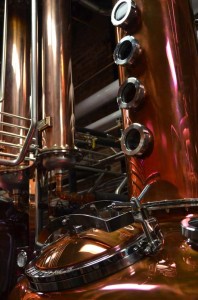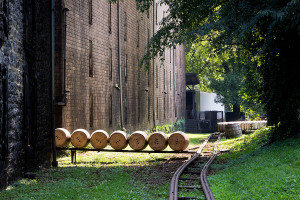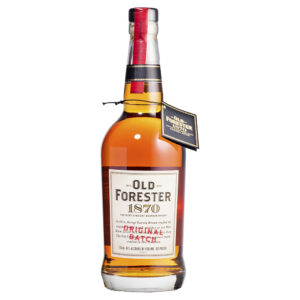By Richard Thomas
Before covid-19 slapped whiskey club meetings, distillery tours, certification courses and brand-hosting tastings closed, bourbon education was there for anyone who wanted it. Throw in the many books that have been written on the subject, and there is no reason why any enthusiast shouldn’t have a firm and accurate grasp of at least the basics of what bourbon is and how it is made.
Yet despite this, I still hear misinformation almost every time I’m present at one of the aforementioned occasions. I have heard the same myths over and over since the 1990s, so the content doesn’t surprise me. Nor does their persistence. Once someone learns something wrong, dislodging the falsehood is difficult. Moreover, some people are particularly close-minded and stubborn about changing their minds; the same folks dislike expertise and ignore it.
So bourbon myths persist, despite all the education that was happening before the crisis and will (presumably) resume in the near or middle term future. Debunking these myths is akin to persuading people that Oliver Stone’s movie JFK was a work of fiction about the life of a conspiracy theorist: the work never stops, but sometimes we enjoy it anyway.
7. Evan Williams Or Elijah Craig Created Bourbon: Heaven Hill has decades of marketing effort tied up in the tale tales that either Evan Williams or Elijah Craig invented bourbon. I even believed the latter tale myself until the mid-1990s, because the claim was repeated numerous times in Kentucky history books.
The truth is the features of making bourbon were not invented by any one man, and evolved steadily over the early decades of the 19th Century. If any one man were to be credited with creating bourbon, that man should be Dr. James Crow. He drew all the pieces of Kentucky bourbon-making together, studied them in his lab, and created a cohesive process we would recognize today. Even so, Crow didn’t invent bourbon; he codified it.
6. Old Forester Was The First Bottled Bourbon: This one rings truer than the brand myths surrounding Williams and Craig, but isn’t quite the whole truth. Up to the mid-19th Century, the way most any booze was dispersed was to bring a bottle or jug to the grocery and have it filled from the cask there; cafes, bars and taverns could serve alcohol in pitchers or bottles, and these were also filled on site from the cask.
Obviously, this system left much room for adulteration by unscrupulous barkeeps and grocers. Old Forester founder George Garvin Brown was putting a major stake in building a reputation for quality by bottling his bourbon himself, because when he did this in 1870 bottles were still handmade and therefore not cheap. He was certainly the first to do so on anything like a large scale, the first to sell his bourbon exclusively in bottles, and he built his brand around the concept, but he wasn’t actually the first to do sell by the bottle. Examples of bourbon bottle labels from at least as early as the 1850s survive in Kentucky museums, but the distinction is that these whiskey producers sold both bottles and casks. Old Forester came only in bottles.
5. “Distilling Returned To Whiskey Row For The First Time Since Prohibition:” The funny part about this myth is that the truth is so much better. Louisville’s fabled Whiskey Row never had a distillery on it. The street was the home to many a company, with offices and whiskey warehousing. Plenty of blending and shipping went on there (especially the latter, given its access to the adjacent Ohio River), but since Whiskey Row (Main Street) has been recognizable as Whiskey Row, there were no distilleries on it until the Evan Williams Experience opened in 2013.

The gleaming Vendome copper of Evan Williams, made less than a mile from the museum
(Credit: Joana Thomas)
This particular myth is perpetuated as much by lazy and ill-informed journalists and bloggers as by anyone else, alas. We should be doing better.
4. Bourbon Must Be Aged Two Years To Be Bourbon: This bit of confusion conflates being straight whiskey with being bourbon. Federal law specifies no minimum aging period of any type of American whiskey, including bourbon. This is in contrast to most of the rest of the world, which following the Scotch and Irish model, usually (but not always) requires a minimum of three years to be called whisky. Instead, American law simply says to be called whiskey, the spirit must be aged; the law says nothing about for how long. The two year rule is to be called a straight whiskey.
3. Bourbon Is Named For Bourbon County: Maybe, maybe not. It could have been named for the county or it could have been called bourbon whiskey because the main market was New Orleans, which was a French possession until President Thomas Jefferson bought the vast Louisiana Territory from Napoleon. America itself was quite Francophilic back in those days, hence why Kentucky had (and still has) a Bourbon County.
Yet Bourbon County, Kentucky shrank considerably when Kentucky transitioned from a frontier territory into a settled and organized state. Once comprising much of the Bluegrass and eastern Ohio River boundary country, eventually Bourbon County became a place some 60 miles south of Maysville, where so much bourbon was shipped downriver to New Orleans. By the time bourbon was becoming identifiable and one can find printed references to it in newspapers, very little of it was being made in Bourbon County.
The truth is we don’t really know why bourbon is called bourbon. So maybe, but maybe not.
2. James E. Pepper Invented The Old Fashioned: Father, forgive me, for I have sinned. I sometimes repeat these myths (albeit usually by disclaiming them in some way), because I love a good yarn. The one I repeat the most, with the attendant “supposedly” and followed by the real history, is that James E. Pepper either created the Old Fashioned or it was created for him or at least named for him by Louisville’s Pendennis Club. Hint: when no one is sure what exactly a guy’s role with something was should be a sound indicator it’s all a myth.
Cocktail historian Dave Wondrich has found newspaper references to the Old Fashioned in the Chicago Tribune dating to 1869; the Pendennis Club opened 1881. Case closed on that one, although it’s likely that Pepper, a gifted salesman, popularized the Old Fashioned.
1. Bourbon Must Be Made In Kentucky: This myth is the Flat Eartherism of whiskey enthusiasm. Literally no one connected to the business is promoting it. No. A thousand times no.
 The Whiskey Reviewer A World of Whiskey, Poured Every Weekday
The Whiskey Reviewer A World of Whiskey, Poured Every Weekday



True, bourbon does not have to be made in Kentucky but why would you drink bourbon made anywhere else? I’m looking at you Tennessee.